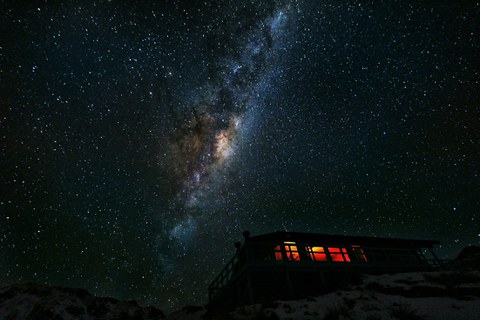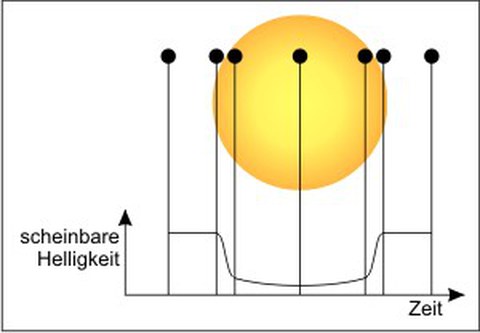Astronomical Observations

Milchstraße über der Angelus-Hütte, Neuseeland
Observations of Asteroids
Until the end of 2017, the professorship had its own observatory with a 60 cm reflector telescope for research and student training. Asteroids were observed with a CCD camera from this observatory of the Lohrmann Observatory on the Triebenberg. The focus was not on the discovery of new objects. The main target was rather those asteroids whose orbits were not known precisely enough for various reasons and for which further observations are necessary in order to improve the quality of their orbit parameters. Lists of corresponding asteroids are published by the Minor Planet Center (MPC) of the IAU, located at Harvard University in Massachusetts, USA.
Astrometry of CCD Images
The MpCCD program package was specially developed at the Lohrmann Observatory for the automated evaluation of the asteroid images obtained. This software is able to determine the position of an observed asteroid with high precision without interaction.
Automomous Operations of the Telescope
The long-term goal was the complete automation of the entire recording and evaluation process for asteroid observations. Ultimately, it should be possible for a computer program to independently select the best observable asteroids from the lists issued by the MPC, for the observatory to automatically carry out the observations and to evaluate the acquired images immediately or later.
Exoplanet Transits
Exoplanet transits could also be detected with the instrument on the Triebenberg. Such events are involved when a planet outside our solar system steps in front of its mother star and absorbs part of the light emitted by the star. The extent, duration and repetition cycle of the decrease in brightness can then be measured from the earth. With this information, conclusions can be drawn about other parameters of the exoplanet system, such as the size ratio of star to planet or the large orbit half-axis possible.
As part of Franz Hofmann's diploma thesis at the Lohrmann Observatory, software was created that can be used to evaluate the corresponding observations of brightness gradients during exoplanet transits. The photometric measurements required for this are carried out by the MpCCD package, which was also developed at the Lohrmann Observatory.

